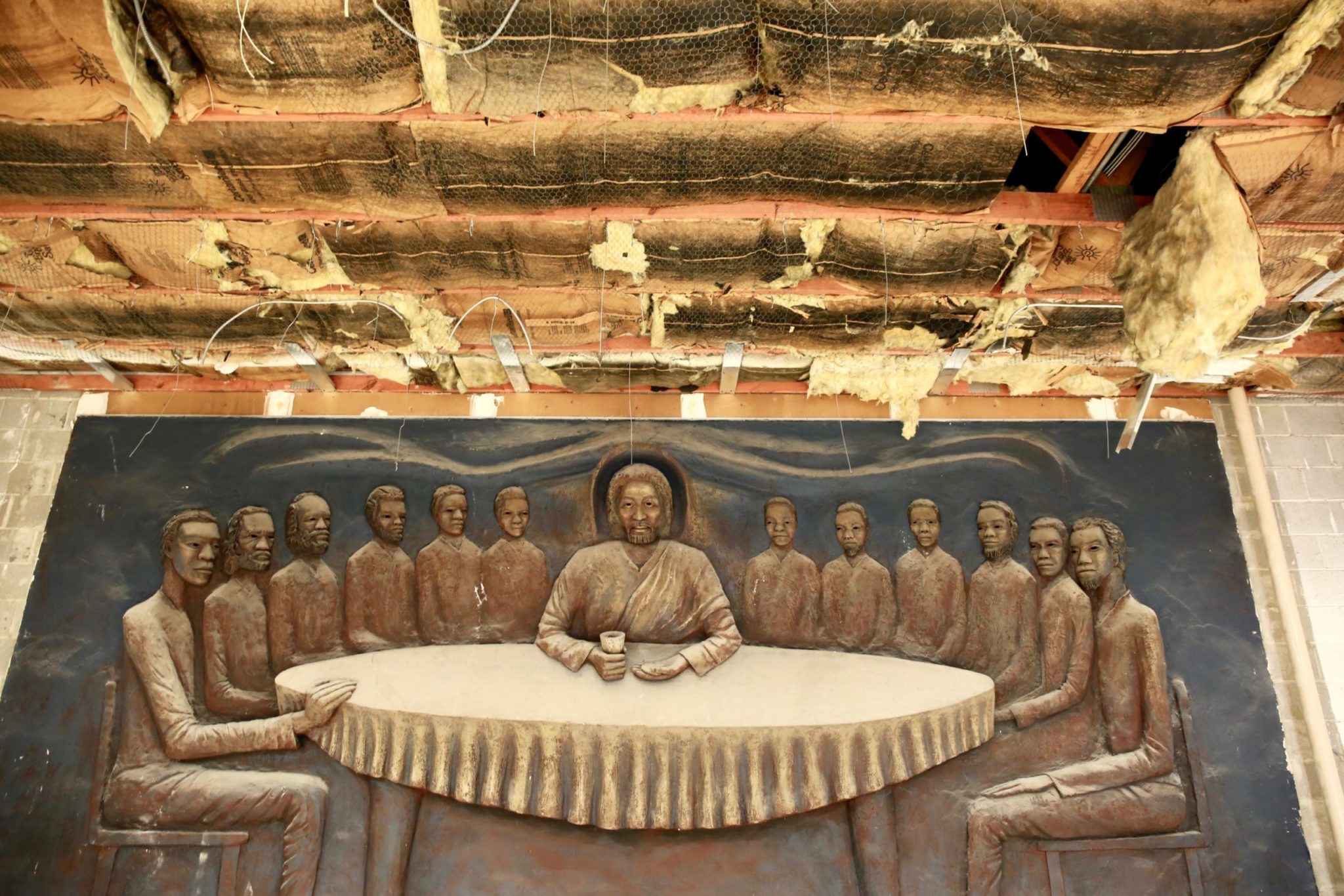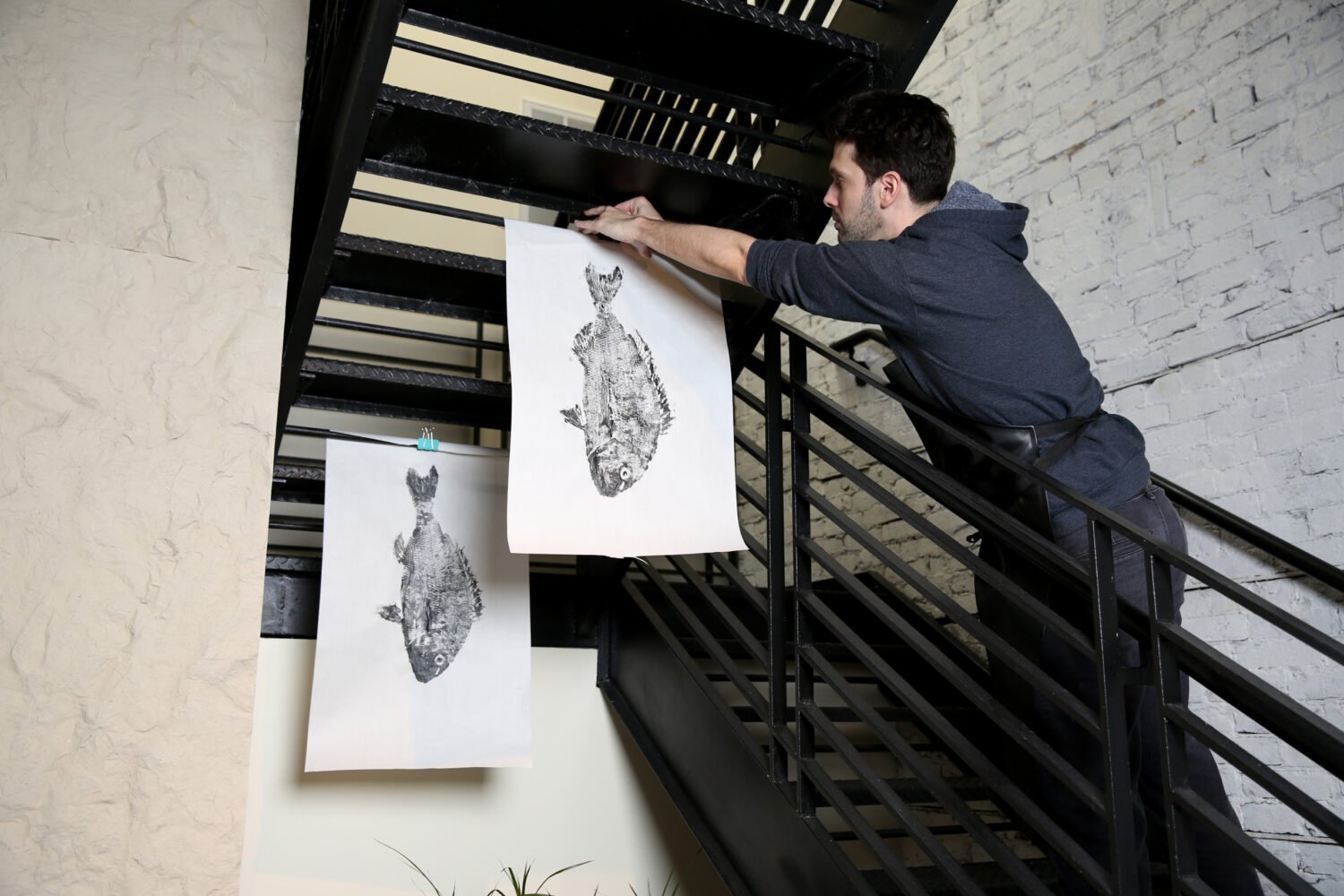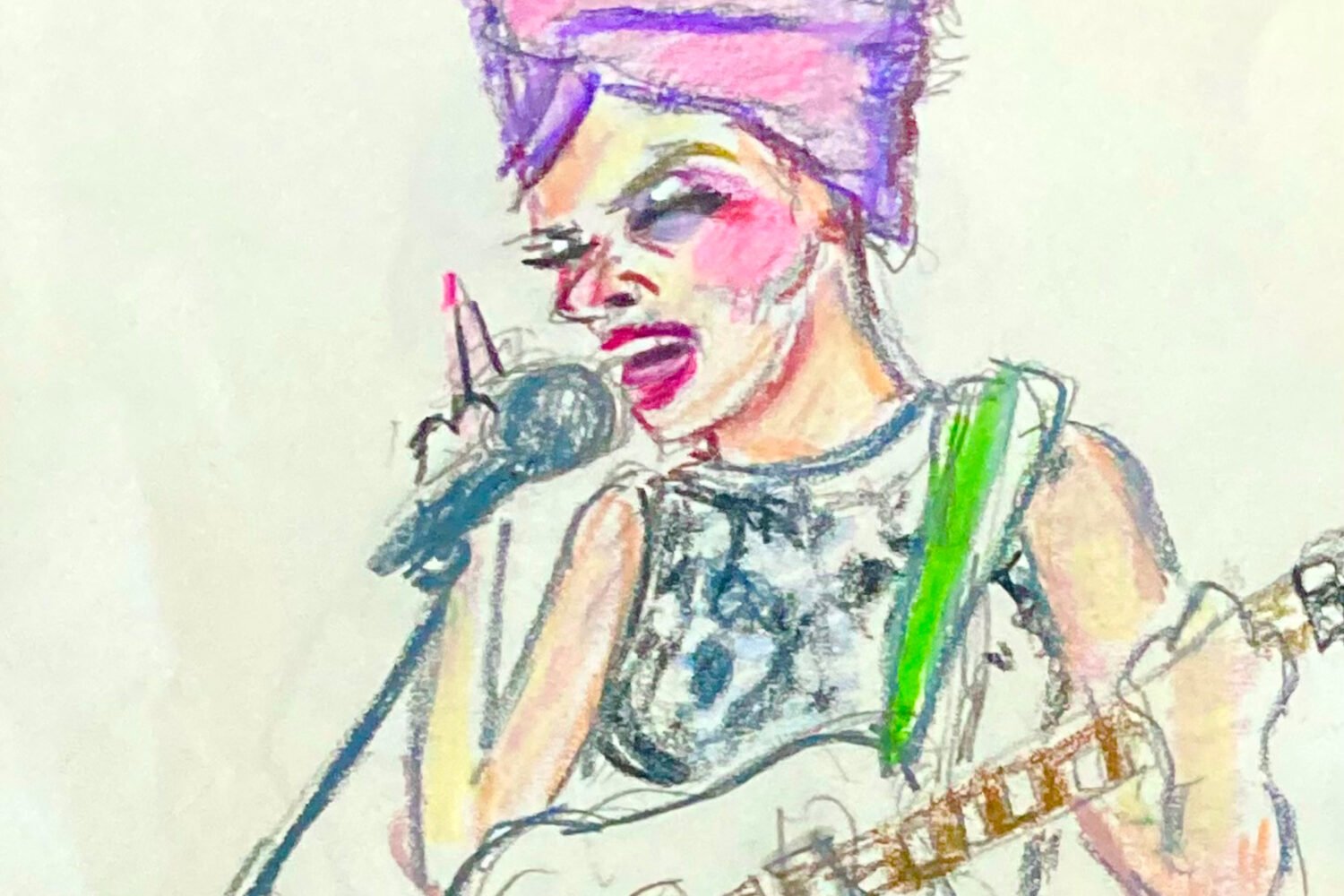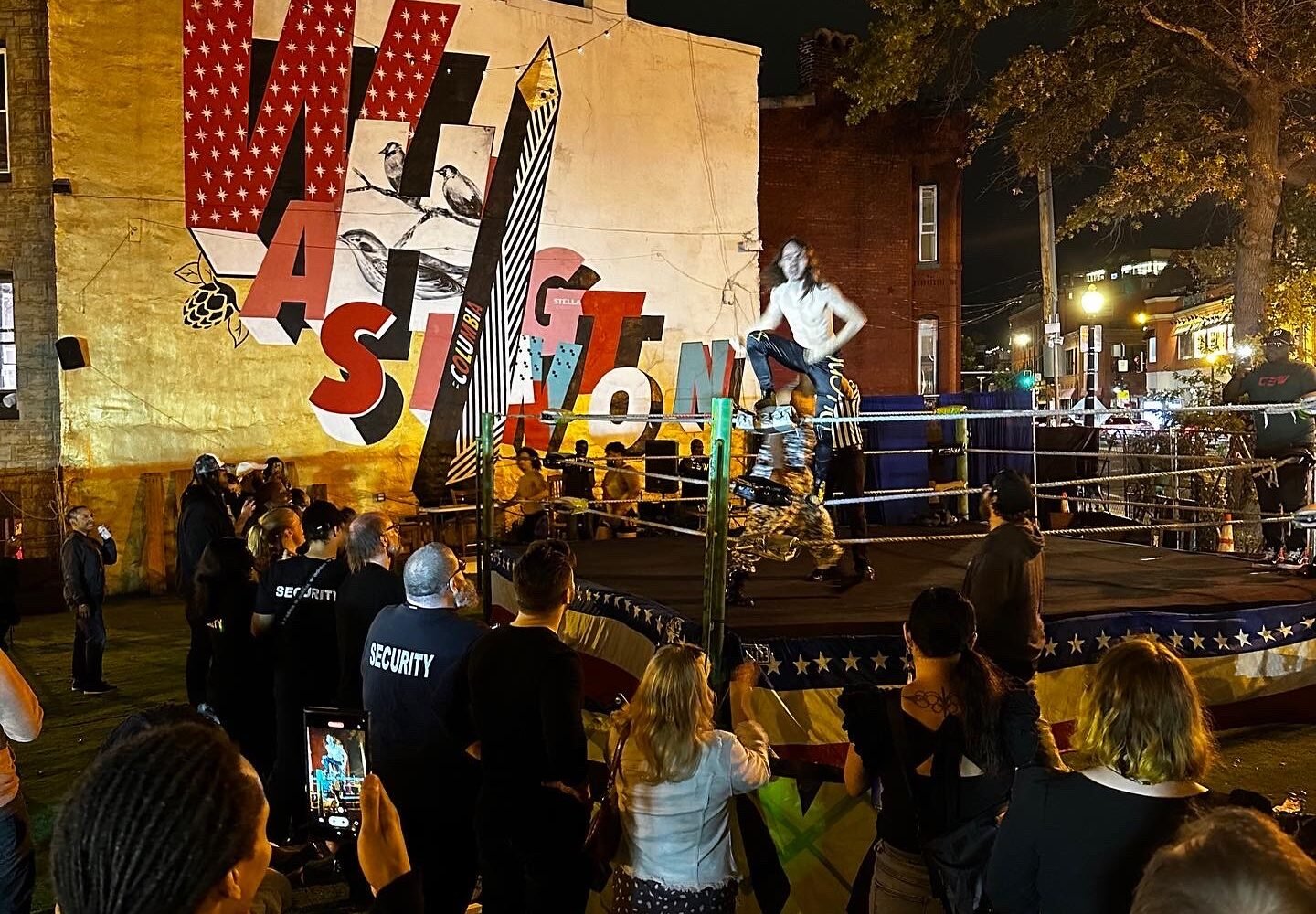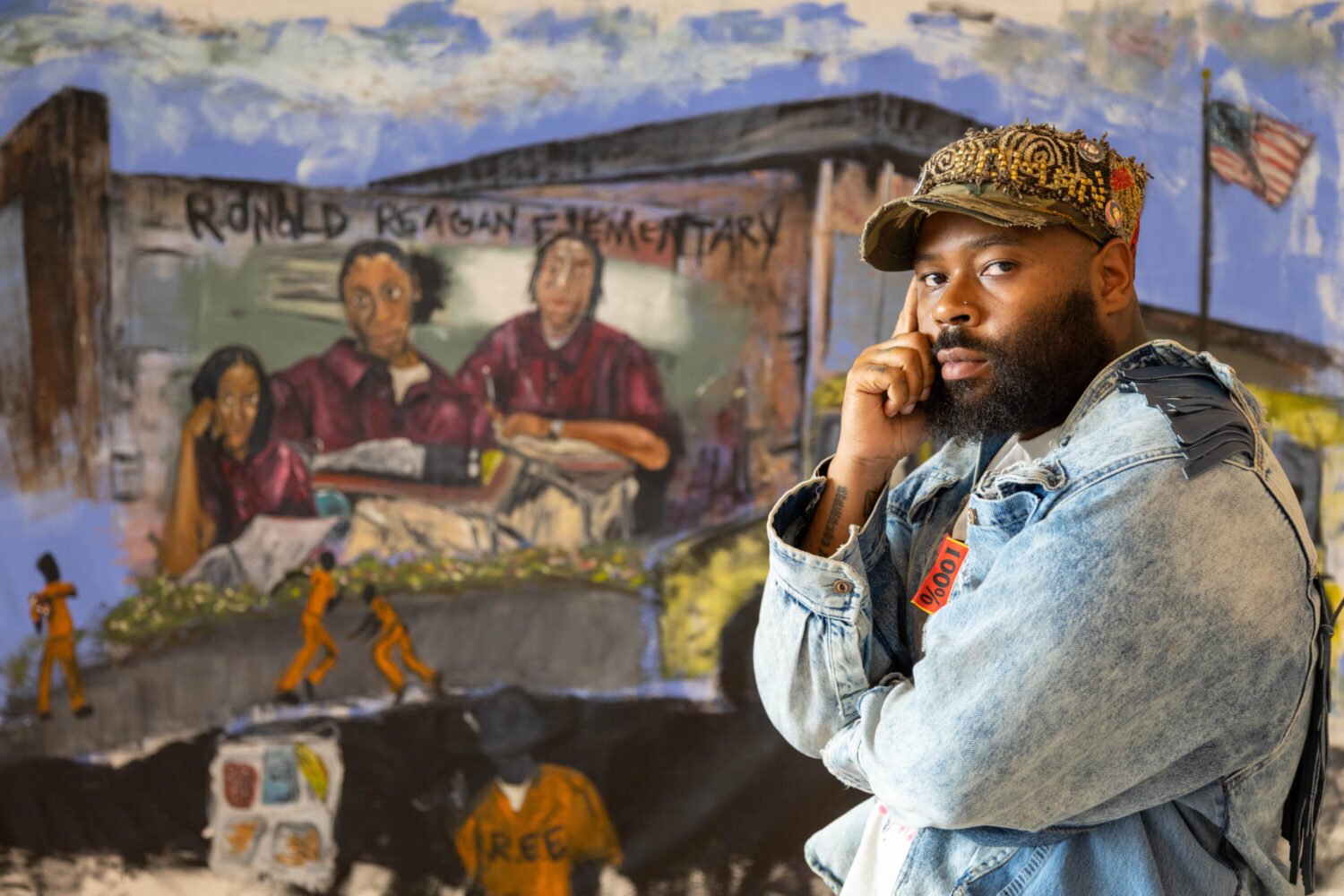Akili Ron Anderson is a Howard University professor now, but in the early 1980s he was the first chairperson of the visual arts department at the Duke Ellington School of the Arts when a coworker approached him about making an altarpiece at his church, New Home Baptist, on Holmead Place, Northwest. Anderson grew up around the corner on Meridian Place and loved the idea of making a piece of art that his mother could see. So he began working in the church whenever it was not in use, between choir practices and services, eventually installing a Last Supper bas relief that was covered with drywall when the building was sold and remained hidden for years until construction workers discovered it recently. “Most of the time I was in there by myself,” he says. “It actually got to be something of a spiritual experience for me.”
Anderson envisioned his artwork forming a picture that would be completed by the presence of a preacher and a choir. “It was done to permanently be on that wall,” he says. He built it using wire mesh that was anchored into the cinderblock walls, then built up the relief using concrete and Structo-Lite, a coarse type of plaster that’s frequently used for restoration. “You put it on sculpture and you chisel into the plaster,” Anderson says. “Then you put the white coat on top of that to smooth it out.” Removing the altarpiece would require some expertise and not a little money: “You’d have to cut out in sections with the cinderblock that’s behind it,” Anderson says. “That could be done but it’s expensive.”

At the time he made the sculpture, Anderson was inspired in part by the Black Arts Movement of the ’60s and ’70s, which in part saw black art as a corrective to centuries of oppression. Anderson, who attended a year of art school at the Corcoran before transferring to Howard, describes the Black Arts Movement as ” a personal and collective cultural discovery and sense of black pride. It wasn’t for me, at least, anything other than that.” Many African American churches had artwork that portrayed Jesus as a blue-eyed white man, but Anderson says his work wasn’t intended to “change any historical point: Jesus is a black hero, frankly. It was a matter of claiming what we call that the Jesus of history. It was totally legitimate for people praying or working to make their heroes look more like them. It’s no problem, but when you’re placing the image of one culture above another, that says, ‘We are more important than you.'”
He modeled his sculpture of Jesus and the disciples on congregants and people he saw around Columbia Heights. “It was just people walking up and down the streets,” he says. “It was the people I grew up with. I took not only features but expressions: how people emote, how a leader looks, how a follower looks. All of those kind of things went in to the faces.” The bodies are not where the action is on this sculpture. “You want it to be alive, get an alive feeling from the piece,” Anderson says. “You want it to come off the page or come off the surface as having a life. That’s what I tried to do.”
Over the next decades, Anderson created art for a number of churches, mostly around the 14th Street corridor, including John Wesley AME Zion Church and St. Augustine Catholic Church. “I think it’s important for black children sitting in churches all over this country on Sunday morning to look up at the windows, look up at images and see themselves and believe that they can ascend to heaven, too,” he told the Washington Post in 1994. He often worked in stained glass. You can see his large work Sankofa at the entrances to the Columbia Heights Metro Station; he’s also got stained glass works at Andrew Rankin Memorial Chapel at Howard and in the Prince George’s County Courthouse.
Anderson was delighted to learn the sculpture had survived all these years; he’d long assumed the building’s next owner, the Church of Jesus Christ of Latter-day Saints, had removed it. He and Joy Zinoman, the Studio Theatre founder who is turning the former church into the new home for Studio Acting Conservatory and whose crew found the artwork, have been in touch, and he hopes to get over to Holmead Place soon with his students to see the sculpture again. “Let them just see the life of an artist and see what happens with the work,” he says. “To see what their questions are. I might walk by my old house.”

